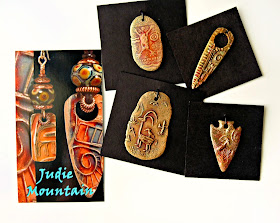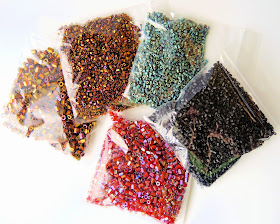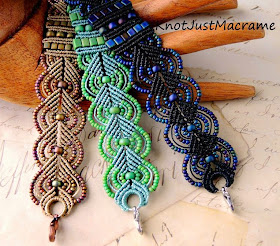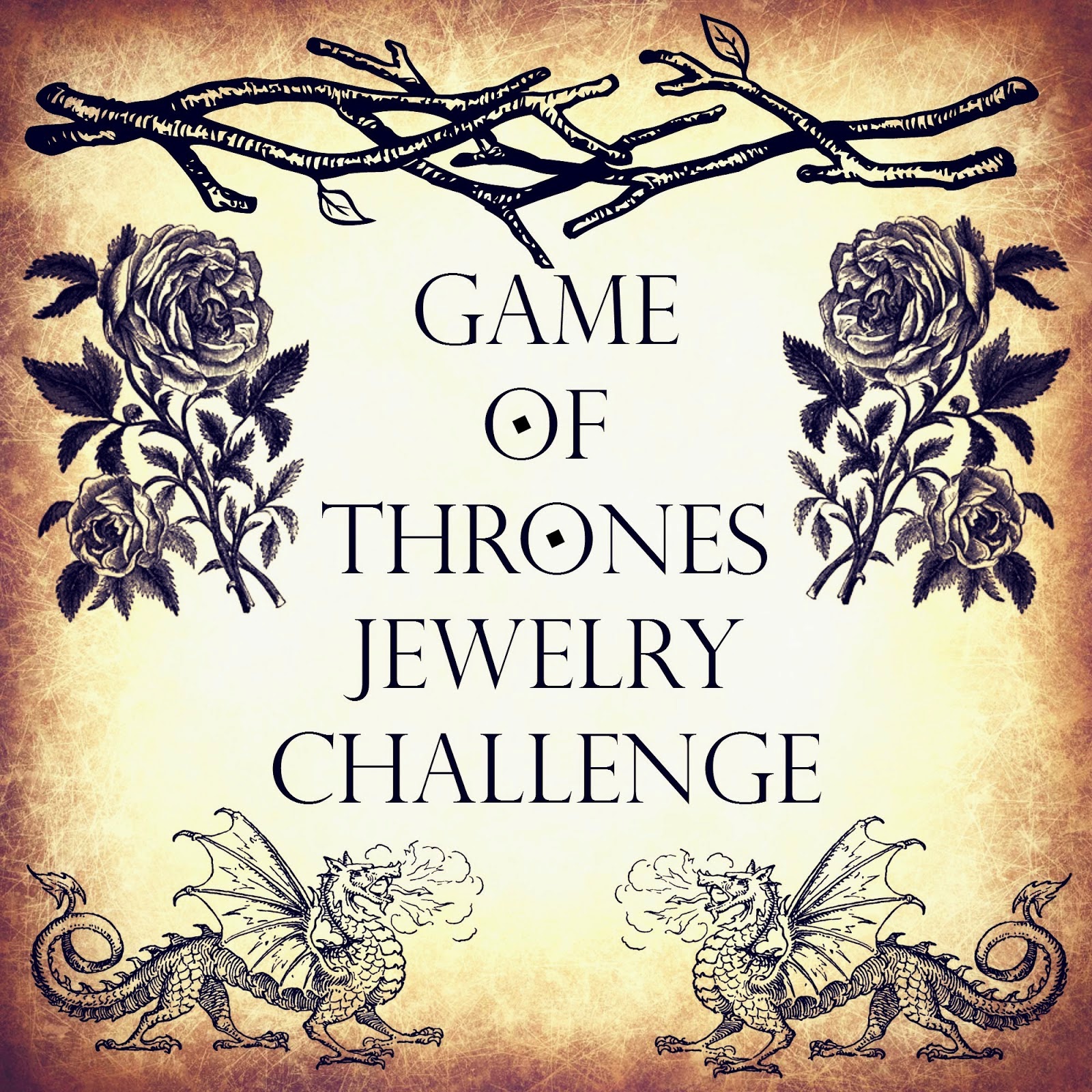And we're back! Remember a while ago when Lindsay Starr and I (she's the short one in the photo hahahahaha), along with a group of our beading friends, brought you the first Beading Back in Time Blog Hop? Maybe these will jog your memory:


No? Still nothing? That's okay - shake it off. We're moving on anyway! I'll give you the short run down. A few months back, my pal Lindsay Starr (of
Phantasm Creations) and I came up with a brilliant idea to combine our love of beading and all things old into a blog hop challenge. We had so many ideas (history is a huge topic, you know) that we finally had to break it down into a series of four hops over the course of a year. Our first one covered the period before humans (you can find my post
here if you want to catch up). And now... we come to the period of early humans. We're going to focus on the period before 3500 BCE this time around - before writing. Which is okay, since it seems those early folks were too busy trying to survive to be kickin' back with a novel anyway. Here's what I've learned:
This period of human history is often broken down into the Paleolithic (or Palaeolithic for those who like to add extra vowels to everything - you know who you are) and the Neolithic. No, I'm not an expert on these matters, and no, we're not going to debate the inclusion of a Mesolithic period because I don't have that much time. Moving on...
 |
| Lucy |
The Paleolithic era, or old stone age, was a time when humans were nomadic and completely dependent on the environment. The climate was much colder during this period and large herds of animals roamed in search of food. Man out of necessity followed the herds, hunting and gathering food. They used fire for light, heat and cooking and invented stone weapons such as daggers, spear points and axes. Temporary shelters used during warmer seasons were made of animal skins and plants (as were clothes). Caves provided shelter during the colder periods.
%2Bof%2Bthe%2BNiaux%2Bcave%2C%2Breplica%2Bin%2Bthe%2BBrno%2Bmuseum%2BAnthropos.%2BMagdalenian%2BPeriod%2Bof%2BPaleolithic%2Bart..JPG) |
| Bisons |
Because of this lifestyle, art was either drawn on cave walls or was small enough to be carried from place to place. Most art from this period focused on hunting, women and fertility. Shells that are pierced and covered with red ochre dated to 82,000 years ago have been discovered with wear patterns suggesting they may have been strung as beads. The oldest known sculpture is a 2.4" female figure carved in mammoth ivory dating to 35,000 BCE. Cave paintings from about the same time have been found in locations across Europe and even older ones in Southeast Asia.
 |
| Mammoth engraved on mammoth ivory |
 |
| Tools made of reindeer antler |
 |
| Venus figurine |
|
|
The Neolithic era, or New Stone Age, started sometime around 10,000 BCE. The big change during this period was the invention of agriculture. Man learned to manipulate nature and produce food by planting and harvesting crops, and all of this was made possible by the warming climate. New types of tools were introduced and animals like dogs, sheep, goats, cattle and pigs were domesticated. Religion becomes more apparent as group mentality grows.
Human beings beginning to live in fixed settlements and in larger groups now have more time for art. Pottery shows up more often during this period (although they had the skills before, pottery was not practical for carrying when constantly on the move). The female form and fertility are still strong themes in art from this period, but animals appear as well.
 |
| Bone beads |
|
 |
| Neolithic stone beads |
.jpg) |
| Neolithic burial of two women who were wearing necklaces made of shells. |
 |
| Human skull covered in plaster with shell eyes |
|
The challenge for this blog hop is an easy one: during the month of April, make something inspired by this theme - whatever your take on it. Then meet Lindsay and I and the rest of the team back here on May 1st for the big reveal. I can't wait!!







































%2Bof%2Bthe%2BNiaux%2Bcave%2C%2Breplica%2Bin%2Bthe%2BBrno%2Bmuseum%2BAnthropos.%2BMagdalenian%2BPeriod%2Bof%2BPaleolithic%2Bart..JPG)





.jpg)
